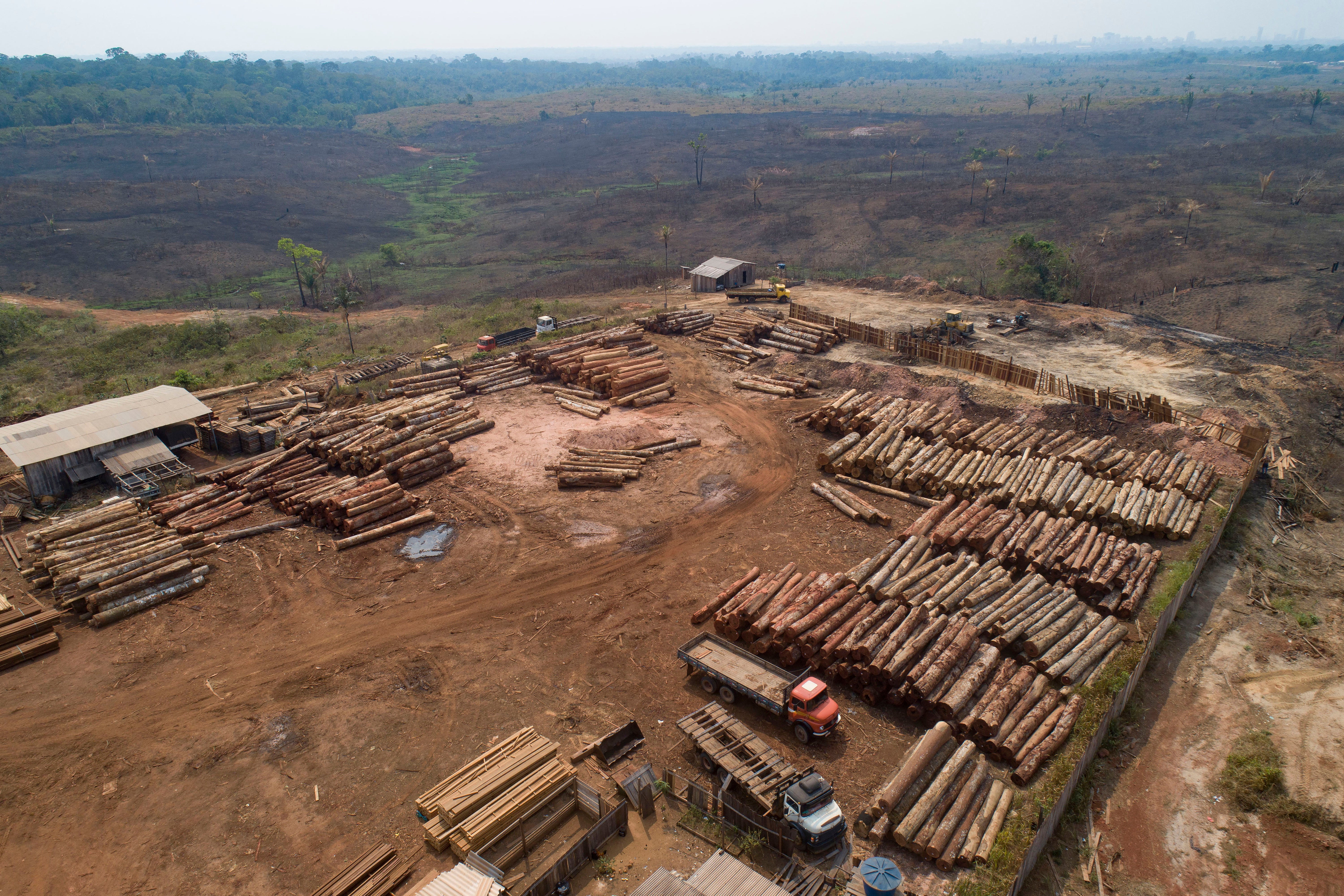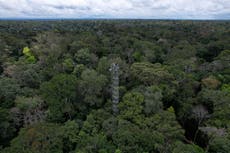Deforestation of Amazon down by a third in 2023 after Bolsonaro’s defeat, says Brazil government
‘We reversed the curve, deforestation isn’t increasing’
Deforestation in Brazil’s Amazon has dropped by a third since the new government came in power, the latest data shows.
The first six months of 2023, since the new president Luiz Inácio Lula da Silva took power, Amazon deforestation dropped by 33.6 per cent, according to government satellite data released on Thursday.
This marks a significant downturn in deforestation after four years of rising destruction under former president Jair Bolsonaro in the crucial rainforest often called the lungs of the earth.
From January to June the rainforest had alerts covering 2,650 square kilometres (1,023 square miles), down from 4,000 square kilometres – an area the size of Rhode Island – during the same period last year, the government records stated.
This year’s data includes a 41 per cent plunge in alerts for June, which marks the start of the dry season when deforestation tends to jump.
“The effort of reversing the curve of growth has been reached,” João Paulo Capobianco, the environment ministry’s executive secretary, said during a presentation in Brasilia on Thursday.
“That is a fact: we reversed the curve; deforestation isn’t increasing,”
Mr Capobianco said that full-year results will depend on a few challenging months ahead. Still, the data is an encouraging sign for Mr Lula, who campaigned last year with pledges to rein in illegal logging and undo the environmental devastation during Mr Bolsonaro’s term.
The former far-right leader weakened environmental authorities while his insistence on development of the Amazon region resonated with landgrabbers and farmers who had long felt maligned by environmental laws.
They were emboldened, and Amazon deforestation surged to a 15-year high.

Thursday’s deforestation data comes from a system called Deter, managed by the National Institute for Space Research, a federal agency. It is an initiative mainly focused on detecting real-time deforestation. The most accurate deforestation calculations come from another system called Prodes, with data released only annually.
“Bottom line, we are prioritising environmental law enforcement,” Jair Schmitt, head of environmental protection at Ibama, Brazil’s federal environmental agency, said in a phone interview with The Associated Press.
However, the continued shortage of personnel means the task hasn’t been easy, he said, with many agents of the Brazilian ministry of the environment’s administrative arm retiring and not being replaced during Mr Bolsonaro’s administration.
While the decline in deforestation is a positive development, satellite monitoring indicates a surge in fires in the Amazon during June, which marks the beginning of the dry season, primarily resulting from clearing areas deforested in the second half of 2022.
Globally, heatwaves and wildfires have been wreaking havoc with the world experiencing temperature extremes following the onset of the El Nino phenomenon in the Pacific Ocean, associated with higher temperatures coupled with global heating. In the Amazon, however, fires are mostly man-made and occur after clear-cutting of the forest.
Brazil’s environment ministry has doubled its budget for fighting forest fires and increased the scope of its fire squads for the critical period of July to October to tackle the intensifying challenge. Approximately half of the 2,117 temporary firefighters are Indigenous peoples.
The government has been also seizing thousands of illegally raised cattle within embargoed areas.
“We started the year with a lot of difficulty because of everything we inherited, reorganizing all the enforcement teams, environmental protection, reactivating tech systems,” said Rodrigo Agostinho, the head of the Brazilian ministry of the environment’s administrative arm, Ibama.
Improved deforestation data also reflect the change in rhetoric coming from the top, said Mr Schmitt. While Mr Bolsonaro openly criticised Ibama and advocated for the legalisation of deforested areas, Mr Lula has said he will rebuild law enforcement and promised to expel invaders from protected areas.
The Amazon rainforest covers an area twice the size of India, two-third of which is located in Brazil, and absorbs about one-fourth of atmospheric carbon dioxide emissions. It also produces 6 per cent of total oxygen in Earth’s atmosphere.
Additional reporting by agencies






Bookmark popover
Removed from bookmarks